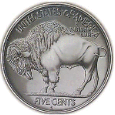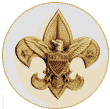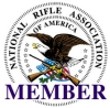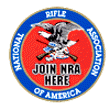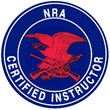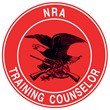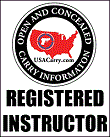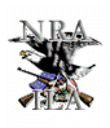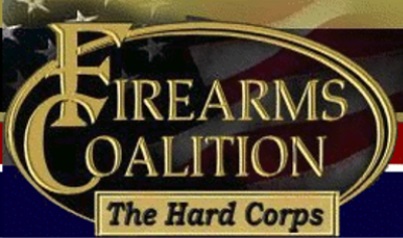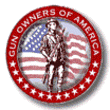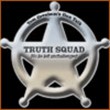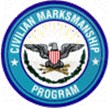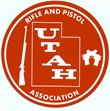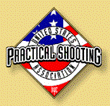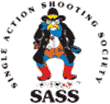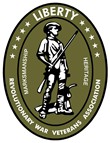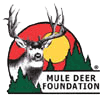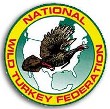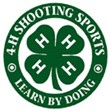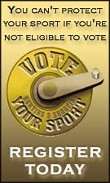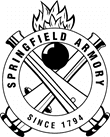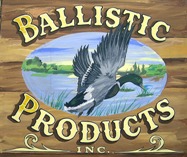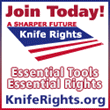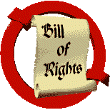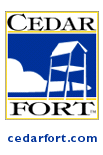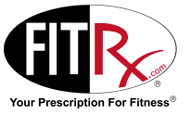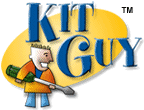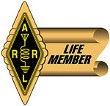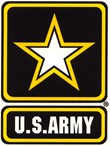| I understand the disappointment both parent and son son experience at losing a Pinewood Derby. My own sons didn't always win their races, either. (I've made the mistake of sharing my speed tips with others in my sons' pack. But I also learned from the competitors and their dads as well.)
The construction of a pinewood derby car is parent-son activity with the boy doing the bulk of the work. If anyone else builds the car for your son, it violates the Pinewood Derby rules and would clearly be unfair to the other boys in your son's pack as well as to your own son.
While there are several websites (including mine) with good tips for building a fast car, winning isn't (or shouldn't be) the point. The goal of the project is to get boy and Dad (or Mom) together. I believe that if Scouts and parents, everything will be just fine regardless of the race outcome.
There seem to be as many ideas about how to build a fast car as there are dads. Some dedicated aficionados have done some semi-scientific study to find what makes a pine car go fast. In this page I bring together what I consider to be the best tips from other racers' dads as well as what I've learned as a dad and as a Cub Scout leader.
My focus is not so much on what makes a car fast, but on what makes a slow car. If we can eliminate the factors that slow the car, the result will be speed.
Derby Rules
Caution! Some of these tips may be restricted by race rules imposed by your unit, district, or council. Make sure you get a current, written copy of the rules before you start construction. Then follow them carefully. Few things can be more devastating to an excited Cub (even more so to his dad) on race day than to be disqualified at the check-in table. To my knowledge, none of the tips in this webpage violate the basic rules included with the official BSA car kit. These are the only "national" rules in existence.
Editorial: It is my opinion that local rules should not be more restrictive than those provided by the kit manufacturer. These more restrictive local rules do not necessarily make the derby more "fair". They only eliminates an opportunity for boys to learn and apply the scientific principles which increase performance. Instead of creating restrictions to performance and creativity, I suggest all derby entrants be given the performance secrets given in this webpage.
Friction
Your biggest enemy is friction. It is the most significant force slowing your car, so reducing friction is the most important thing you can do if you want a faster car. I have never seen a winning car that didn't address this issue -- even the sleek-looking ones. You will encounter friction in five places:
Friction between the wheels and axles.
The axles often have burrs and manufacturing marks which will dig into the wheel's hub. To fix this problem, lock each axle into the chuck of a drill, leaving the head of the axle plus about 1/2-inch of the axle itself sticking out. Polish the exposed axle with a thin strip of wet 400 emery paper. Polish both the axle shaft and the inside of the axle head. Keep the emery paper moving to avoid creating grooves in the axle. Test the axle by inserting it through a wheel and spinning the wheel with your finger. The wheel should spin smoothly and slow down very gradually. For an even better polish, you can use steel wool, metal polish, buffing compound, or jeweler's rouge after the initial polishing with emery paper.
Around the wheel's axle hole you'll often find burrs and rough edges. Carefully clean these surfaces (on both sides of the wheel) with a sharp Xacto knife and some 400 wet emery cloth.
Lubricate the wheels. Various lubricants are available from hobby shops. The standard derby lubricant is graphite powder, which is good, but can be messy. Test any other lubricant before using it for the race. Be prepared to replace your wheels if your test lubricant doesn't work out. Some people recommend talcum powder (baby powder). Penetrating oils (e.g., WD-40) and silicone oils can also work well. Some oils can get sticky or even soften the plastic wheels or paint on the car which can have disastrous effects on speed.
As construction proceeds and upon completion, resist the urge to play with the car. I saw one boy take his newly created masterpiece out to run it in the dirt! It then ran so poorly, it would barely leave the starting gate.
It takes less energy to make three wheels roll, than it does to make all four wheels roll. Some racers keep the center of gravity towards the rear and mount one of the front wheels slightly higher than the other. Then your car will roll on three wheels (one front and two rear wheels) instead of rolling on all four wheels. It seems to me that a loss of control might be more damaging and four wheels will track straighter than three. You are placing a lot of responsibility in the track to not upset the car.
Friction between the wheels and car body
Paint that hasn't cured completely tends to be soft and sticky. It will stick to the wheels and slow the car down. Give yourself lots of time (several days) to apply your final finish coat before you put your wheels on. Also, a single heavy coat will take longer to dry and cure, so apply several light coats instead. That soft finish will also act like a magnet for graphite and you'll never get it clean -- the graphite will permanently discolor a soft finish. If you're painting at the last minute, use
lacquer. Lacquer seems to give a harder, faster finish than other paints. It also hardens much faster.
Giving the wheel hub a rounded surface where is rubs against the car body reduces friction at that point by reducing the amount of surface contact.
When mounting your wheels (after the finish is thoroughly cured) don't push the axles in so tight that you bind the wheels. If you push the axles in too far, the wheels will bind against the sides of the car. Also, if you make the car too narrow at the wheel locations, the wheels will bind against the sides of the center guide rail on the track.
Friction between the wheels and the track's guide rail
A car that doesn't track strait will bounce side-to-side against the rails, dissipating considerable energy. Anything you can do to make the car run strait and smooth will help. Not all tracks are glass-smooth. Even slight bumps in the track can affect the performance of a car.
A long wheelbase (distance between front and rear wheels) and a wide track (distance between wheels side-to-side) enhance the stability of the car and seem to mitigate the effects of a rough track. Therefore, place your wheel axles as far to the front and back as rules allow. Don't cut the car in a way that narrows the distance between the wheels (On most racetracks, the car needs to straddle a 3/8" thick strip anyway). I don't recommend locating the wheels so they extend beyond the nose or tail of the body. Invariably, cars will bump into something and it's nice to have a bit of wood out there to protect the wheels from bumping into objects and affecting wheel alignment.
Friction between the wheel tread and the track surface
Out of the box, wheels may have irregularities left by the casting process (i.e. sprues, burrs, bumps, holes, etc.). You should remove these irregularities, and then carefully sand any remaining roughness with emery paper. Metal polish can restore the glossy finish to your wheels.
Be careful to avoid reshaping your wheels in any other way, or you may disqualify your car. Check the rules in your area. If reshaping the wheels is legal, you can give it a try. Put an axle through a wheel and lock the axle (and thus the wheel) in the chuck of an electric drill. Keep everything snug so the drill spins the wheel. As the wheel spins, slowly sand its running surface to shape it so only a narrow portion of the tread will contact the track. A V-shape minimized contact with the track, but rounding the tread a bit works well too. Don't work too fast or you'll overheat and melt the plastic wheel. At the very least, you should ensure the wheels are perfectly round and concentric with the axle hole and remove the imperfections left by the casting process.
Friction between the car's belly and the track's guide rail
A low-slung car might look cool, but remember that most tracks have a 3/8" strip of wood the car must straddle. Make sure your car has plenty of clearance. The most popular place to add weight to a car is the belly. Make sure it doesn't drag too.
Weight
As you shape the car, you'll remove weight in the form of wood. However, the more the car weights, the better it'll perform on the track. So, plan the car's design so you can add weight after the car's shape is completed. Weight, according to the rules, is limited to 5 ounces. Depending on how much wood you remove, you will likely need to add about 3 ounces of weight. Get your weight as close to the limit as possible. Without adding weight to the car, it will not weigh-in at the maximum allowable weight, thus it will not reach peak performance.
Because of its density, lead has been the traditional weighting material since the inception of the pinewood derby. At a density of 11.34, lead is quite dense when compared to other possible weighting materials. The relatively small amount of lead required for weighting provides the car builder greater flexibility in the car design.
An added benefit of lead is that it is very malleable. With most materials the car builder must create holes or cavities in the car body to fit the shape and size of the weighting material. However, with lead the builder can create any size hole/cavity and then shape the lead to fit the hole. Another nice feature of lead is that it can be easily drilled. Thus, the weight of the car can be easily reduced at the weigh-in by drilling out of a portion of the lead.
Warning! If used or handled improperly, lead is toxic. Therefore, follow the following rules:
- Wash your hands after handling lead (and keep your fingers away from your face).
- Don't eat, drink, or smoke when handling lead.
- Keep lead away from food, water, and food preparation areas.
- Collect and properly dispose of any lead scrap.
- Melting lead must be done only outdoors by experienced adults. The fumes are toxic, and the lead can pop and/or splatter during the melting process causing severe eye and skin injuries.
I use .38 caliber wadcutter pistol bullets I mold from wheel weight lead. I cast enough for the whole pack. 3-5 bullets per car will do the trick. They fit nicely when epoxied into a 3/8" hole drilled in the belly. It doesn't affect the appearance of the car and keeps the weight low.
Other excellent options include lead fishing weights -- especially the lead wire that can be cut into short lengths to glue into holes drilled into the car body.
It seems to be best to keep the weight low in the body. But be careful nothing extends below the belly which can drag on the track -- remember on most tracks, the car straddles a 3/8" thick strip of wood.
Weight distribution can affect your car's speed. Your car can correct its course more easily if it has a low rotational inertia. Make the unweighted car body as light as possible, and keep the lead weight as compact as possible -- don't spread it across the full length of the car.
One theory holds that the further back the center of gravity is, the higher the weight will be when the car is placed in the starting position on the track, and therefore, the more static energy the car will have to get it rolling down to the level portion of the track. I've seen as much as a quarter of a second difference in the same car run frontward and backward to verify this theory. However, the center of gravity must be far enough in front of the rear axles to keep the front wheels from bouncing too much over the joints and imperfections in the track. This bouncing will slow the car down. Most people recommend locating the center of gravity of the car 1 to 1-1/2 inches in front of the rear axle
I find that a long wheel base with the center of mass a bit forward of the rear axle has the greatest energy and tracks well during the race. Cars with a short (stock) wheelbase will need the center of mass closer to the center - about 1/3 from the rear wheels in order to track well.
Wheel Alignment
Keep your wheels and axles straight. Crooked or misaligned wheels will cause your car to ride the track's guide rail or to shimmy. The extra friction will slow your car down. Keeping your wheels and axles straight is probably the most important step in building a faster car. Mount the wheels so all four are strait in relation to each other and perfectly perpendicular to the body. Be careful not to bend the axles, either during construction, during pre-race play, or during the race by smacking into objects at the finish line.
The stock axle slots are often misaligned. If allowed, drill holes (a #43 drill is about right) for your axles -- don't use the slots (unless required by your local rules). Use a drill press so you can get the holes perfectly perpendicular to the long axis of the car body. Do this before you shape the car so you have flat sides to work with. Later, when you've finished shaping and painting your car, the axles will fit easily into these holes, and your wheels and axles will be straight. If you use a bit that is slightly smaller than the axle nails in your kit, then you may not need glue to hold your axles in place and you won't have to worry about the axles wobbling in oversized holes. One benefit of a tight hole is you can remove the axle and change wheels if necessary (it's easy to experiment so you can pick the best wheels of the race).
If you must use the slots, glue the axles in place with epoxy. I've seen many cars dismantle themselves because the slots just won't reliably hold the axles, much to the joy of those who do use glue. Wheel alignment is harder with the slots -- do the best you can.
Aerodynamics
Aerodynamic drag is a factor, but not quite as much as one would expect. Any aerospace engineer will tell you that the effects of aerodynamic drag increase exponentially with speed. At the speeds pine cars travel, drag is relatively unimportant. Other factors, listed above seem to be much more significant. That being said, a big box certainly won't help, and a sporty shape makes it look like a fast car. Other factors being the same, a streamlined shape slips though the air better. The wedge and the dome shapes (see illustrations above) are consistently seen in the winner's circle. However, surface smoothness is not a factor at pinewood derby speeds.
While air resistance is of less importance than reducing friction and getting the car to track straight, an aerodynamic car with smooth lines certainly looks faster, and it may even race a bit faster. It may be a factor in cars racing against cars where friction has been properly addressed. A clunky looking car with no friction will invariably blow the doors off a fast-looking car with lots of drag in the wheels.
Miscellaneous
Do not make your car longer than the block of wood that came with your kit. Do not make your car wider than the block of wood plus the width of the wheels. Do not install anything forward of your block of wood nor behind. Doing any of these may affect some timing devices, starting gates, and even the ability to run on certain tracks.
Do not use any moving parts other than the wheels unless specifically allowed by your local rules.
Do not allow anything to protrude below the belly of the car -- you should have about 3/8" of clearance. Otherwise, the car's belly will drag on the track lane strip of most tracks
Conclusion
No amount of work can guarantee a winning car. I have seen derbies won by cars that were built haphazardly, so it seems that a minimal effort does not assure a losing car either.
Obey your local derby rules! This is the most important advice I can offer. If you break one of your derby's rules and your car is disqualified, it doesn't matter how fast it is. Some of the suggestions given here are illegal in some areas. Ignore any speed tips that violate the rules for your derby.
If all else fails, volunteer to be the Cubmaster. Store the track at your house. Test-drive your car. A lot.
|
